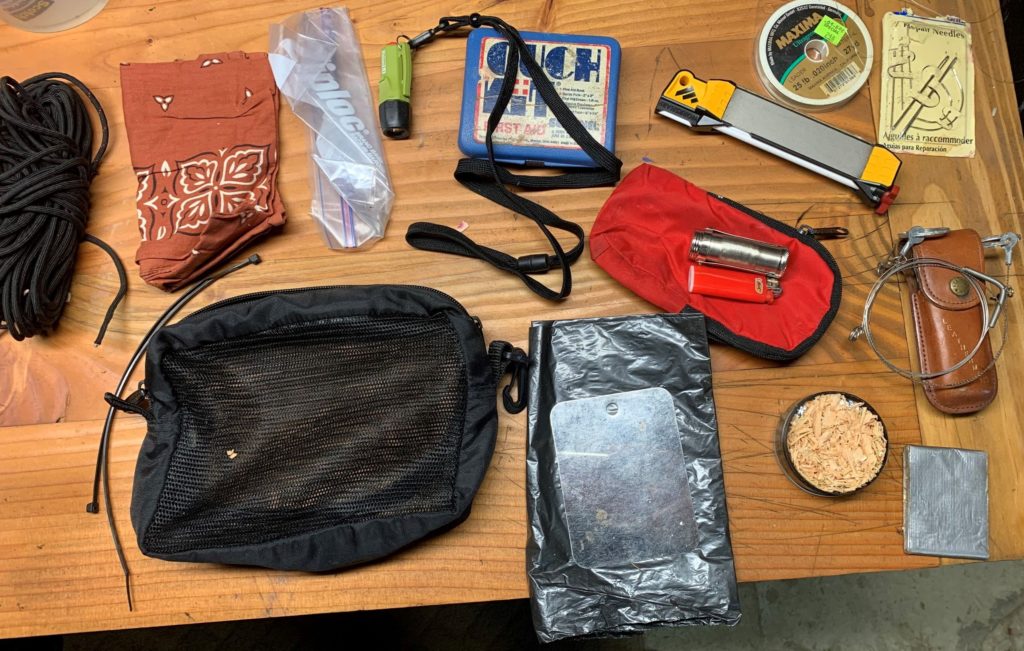I think that I wrote about this early on. If I did, I guess that I will repeat myself a little bit. But if not, I will talk about my journey into self-sufficiency.
I think that the tendency was programmed into my brain when I was a youth. I was a Boy Scout for a number of years and the motto as you should know is “Be Prepared”. That was all fine an dandy, I thought that I was from a camping gear standpoint. When I was in college, I bought some reloaded ammunition at a gun show and the second round was a squib which got the bullet stuck in the barrel. At that time, I had a Leatherman, a small adjustable wrench, a four in one screwdriver and a hammer.
I remember distinctly the moment when I thought to myself that I didn’t have enough tools to do most jobs around the house, the car or anywhere else for that matter. I bought a 3/8″ dowel at the local hardware store and pounded the bullet out from the muzzle and then set about buying lots of tools. With my graduation money, I bought my first socket set from Sears so that I could work on my (now) wife’s car.
After I had mostly one of everything, I started putting together bags that were task oriented. I have an electrical bag and a plumbing bag and then I started adding duplicate tools like screwdriver sets and hammers. Once those were largely complete I started thinking about adding tools to the car so that I wouldn’t get stuck somewhere without tools. That is when I started changing my thinking from just tools but also survival gear.
One site that influenced me early on was Doug Ritter’s site. I definitely looks 20 years old at this point but it started me thinking about assembling ‘survival kits’. One big thing back then was the ‘Altoid tin survival kit’ which was all about having stuff with you when you need it because it is small and compact. This is a long way at arriving to the point that I carry a survival kit in my hunting pack. Today I will take a look at what is in there.

From left to right and top to bottom.
- paracord – It is said that cordage is one of the most difficult things to build in the wild. This is the stranded core which can be separated into individual strands if necessary
- bandana – can be used as a bandage, tourniquet as well as traditional handkerchief usages.
- quart zip lock bag – keep things dry and well as temporarily hold water
- clip-able flashlight – has a lanyard but could also be clipped to a hat bill
- small first aid kid
- Knife sharpener
- 25# fishing line – Along with the sewing needles, this is primarily for field repair. but it could be put into service for fishing as well
- zip ties – the biggest use is securing tags to antlers but also field repairs
- kit bag
- garbage bag – poncho or shelter
- signal mirror – making yourself visible from the air
- fire starters – matches and lighter
- tinder – wood shavings and cotton balls with Vasoline in a water tight container
- cable saw – hand operated saw for wood cutting
- steel fishing leader – fishing or snares
- Leatherman Wave
- Small length of duct tape
While this isn’t a course on wilderness survival, you can see that my kit is oriented toward the basics primarily first aid and shelter. Fortunately I haven’t hardly ever needed anything in here. Some of them cross the line between use in my normal hunting and survival, like the knife sharpener. I have used the needle and fishing line before to fix a tent.
Part of the nice thing about this is that the kit can be moved from bag to some other location, car, daypack, etc. Knowing me, I would probably just build another one if that happened frequently. When I started out, I was thinking that I would add one to each scenario that I build but I came to the realization that not every situation is a wilderness survival situation and that didn’t make a whole lot of sense. What I am trying to convey is that building modularly is efficient and convenient when it comes to this sort of thing.
End Your Programming Routine: When I was in Boy Scouts, I was taking the wilderness survival merit badge. Part of the requirements was to build a survival kit, so I already have done this before. When evaluating the kit, he said it should contain whatever you think you need. Looking back today on that statement, I feel like that was kind of a disserve. I think that I need a lot of things more than this. But remember that each added item comes with a weight and bulk penalty. If I were to add anything, I think a way to purify water and more shelter would be in order.
Recent Comments